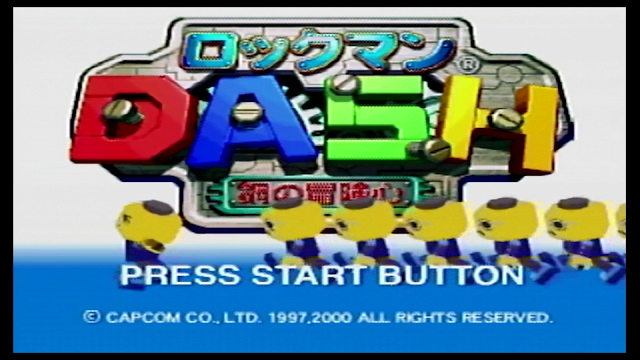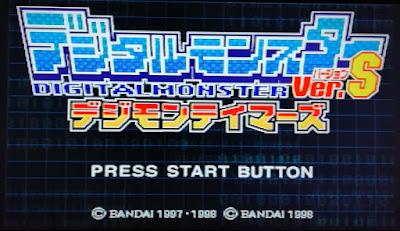Backlog Game Reviews 18: Final Fantasy NES/Famicom
Hey there and
welcome to Backlog Game Reviews.
Today let's take a look at Final Fantasy on the NES.
Released on December 18th, 1987 in Japan, and hitting North American shores on
July 1990, it sold incredibly well in both countries and received very high
scores from reviewers at the time. Many consider it to be one of the best games
on the NES. Let's take a look and see how well the first Final Fantasy holds up
today.
 |
| I played the game on this two in one cart. It was only released in Japan and it had the first two Final Fantasy games on it. |
In the world of Final Fantasy the four elemental
crystals have lost their power, and as a result the wind has stopped, the earth
is decaying, the oceans are out of control, and volcanoes are running rampant.
The world seems to be coming to an end and hope is beginning to fade, but there
is a prophecy that says four warriors of light will appear and restore the
elemental crystals to their former state and bring an end to the cataclysm plaguing
the world. This prophecy is the only thing that’s preventing the people from
falling into despair.
 |
| The events leading up to the start of the game are told to you through this text scroll when you turn on the game. |
At the start of
the game, the story is pretty straight forward. It's a little cliché by today's
standards, but during it’s release in 1987, this was a pretty original story. As the game progresses you learn more about
the world and why the crystals lost their power. There's a lot of
world-building and background story provided by NPCs, something rarely seen in
an NES game.
 |
| Almost every NPC has something original to say. |
When you start
a new game, you get to create your own party. You have four characters in your
party and choose from among six classes. The Fighter has high HP and attack, but
low intelligence. The Black Belt starts out weak, but at higher levels his
attack power will surpass the Fighters. The Thief has high luck, which lets him
escape from almost any battle, but unfortunately since the luck stat is bugged
he has no advantage over any of the other classes. Lastly, there are the Black,
White, and Red Mages. The Black Mage specializes in offensive magic, the White
Mage can learn healing magic, and the Red Mage can learn a little bit of both
and has decent attack strength.
 |
| The party creation screen. |
The game lets
you pick any combination you want. If you want a team of four White Mages or
four Fighters you can do that. The game is beatable with any combination, but
depending on your team’s composition you may have a difficult time beating the
game.
 |
| You're also allowed to name your characters. |
I like this
party creation system, because it gives you an amount of freedom that's not
usually available in an NES game. It also gives the game great replay value.
Depending on the team you create no two playthroughs will be the same. It's a
great system.
 |
| Battle with some Goblins. |
Moving beyond
party creation, Final Fantasy is a pretty standard turn-based RPG. Excluding
boss fights, all of the battles are random encounters. The encounter rate isn't
very high so you can walk around without having to fight something every two
seconds.
 |
| Exploring the overworld. |
The battle system is as straight forward as can be.
You can do physical attacks, cast magic, use items, or run away. You lose the
fight if all of your party members run out of HP. There's not much I can say
about the battle system, it's simple but fun.
 |
| Gameover |
Magic is handled in a unique manner when
compared to other games. Characters don't learn magic spells from leveling up,
instead you have to buy a spell book, which will allow one of your characters to cast a
new spell. I don't dislike this system, however, spell books can be too
expensive. Weapons and armor can also become really expensive, but magic is still
noticeably more expensive. By the time you make it to the third town, you'll be
spending 1500 to 4000 Gil per spell.
 |
| Level 3 magic shop |
 |
| Level 4 magic shop |
Furthermore, characters
don’t use MP to cast spells. Every spell has a level assigned to it. For
example, Fire is a level 1 spell and Ice is a level 3 spell. Each level of
spell has a max number of times you can cast it. At level one a mage might only
have one point for level 1 magic, so they can cast any level 1 spell one time.
Leveling up will get you more points and will let you cast higher level spells.
 |
| My Black Mage currently has 3 points for level 1 magic so he can cast the two level 1 spells he knows 3 times. |
I'm pretty
indifferent towards how magic works in this game. It's not bad, but it's far
too exhausting for my tastes, mostly due to the fact that your magic can only
be restored by sleeping at an inn. I wish there was an item that could recover magic,
but no such item exists. So when exploring dungeons you'll have to ration your
magic carefully. Personally, I only used magic during boss battles or when
backed into a corner.
 |
| Sleeping at an inn will recover you HP, magic, and save the game. |
In regards to
items, buying and managing them is a painfully tedious process. Because magic
should be saved for bosses, you should always carry 99 potions with you to help
keep your HP up. While this may not sound too bad, you can't buy anything in
bulk, but must buy every, single item one at a time. This is obviously an
incredibly annoying and time-consuming process.
 |
| You'll spend a lot of time in item shops. |
Another issue I
had is with how many pieces of armor you're able to carry. The game gives you
plenty of room for items and weapons, but each character can only hold four
pieces of armor at a time. Since each character can equip a maximum of four
armor pieces at once, and equipped armors count toward your armor inventory, you'll
never have room for any armor found while dungeon crawling.
 |
| You get so much space for items you'll never run out. |
If you find a
treasure chest and your inventory is full the game won’t tell you what’s inside
the chest, it'll just say that you can’t carry anything else. Thus forcing you
to decide whether or not to ignore the chest or to discard something and hope you find
something better then what you had just threw away. Because of this I ended up
ignoring a majority of the chests. If the game had provided two or three extra
slots for armor this wouldn't have been a big problem.
 |
| Armor inventory screen. |
There are some road bumps here and there but I would
say the gameplay is overall pretty solid. The battle system doesn't offer a
great deal of complexity, but it strikes a good balance. There are enough options
available to form your own strategies, but it’s not complicated enough to be
overwhelming.
 |
| You can view a map of the overworld at any time by hitting select and B. |
Moving on to the presentation,
the graphics look good and hold up pretty well today, and the music, while good,
doesn't have many memorable tracks. The overworld theme is upbeat and gets you
in the mood to go on an adventure, in my opinion its the best
song in the game. The presentation as a whole isn't outstanding, but it's good.
 |
| The monster graphics are nice and detailed, but sometimes you get things like those purplish monsters in the front row. I have no idea what that is supposed to be. |
That's all I
have to say about this game. It's a really fun retro JRPG. If you like retro
games and JRPGs give Final Fantasy a try, you'll have a good time. Thank you
for reading. Next time we'll talk about a game on the Gameboy Advance. I hope
to see you again at Backlog Game Reviews.




Comments
Post a Comment